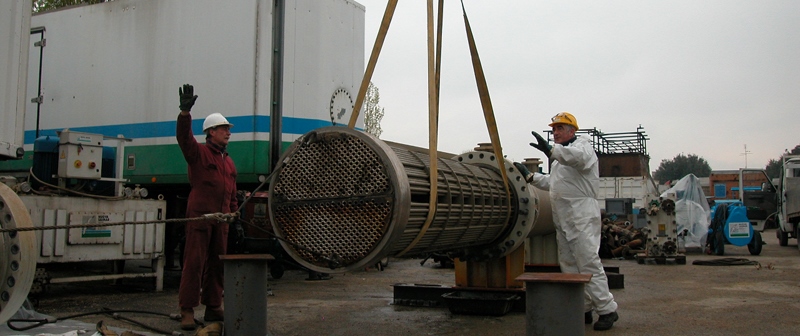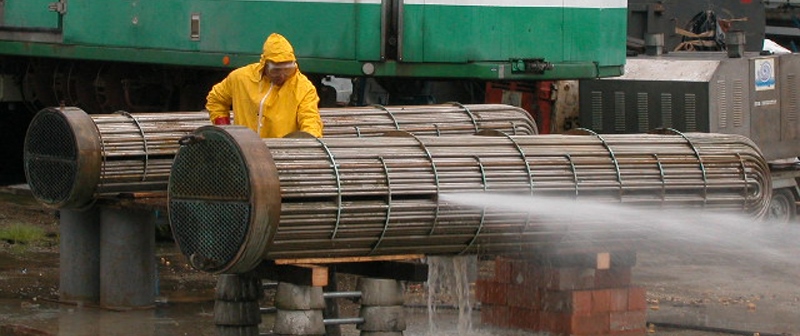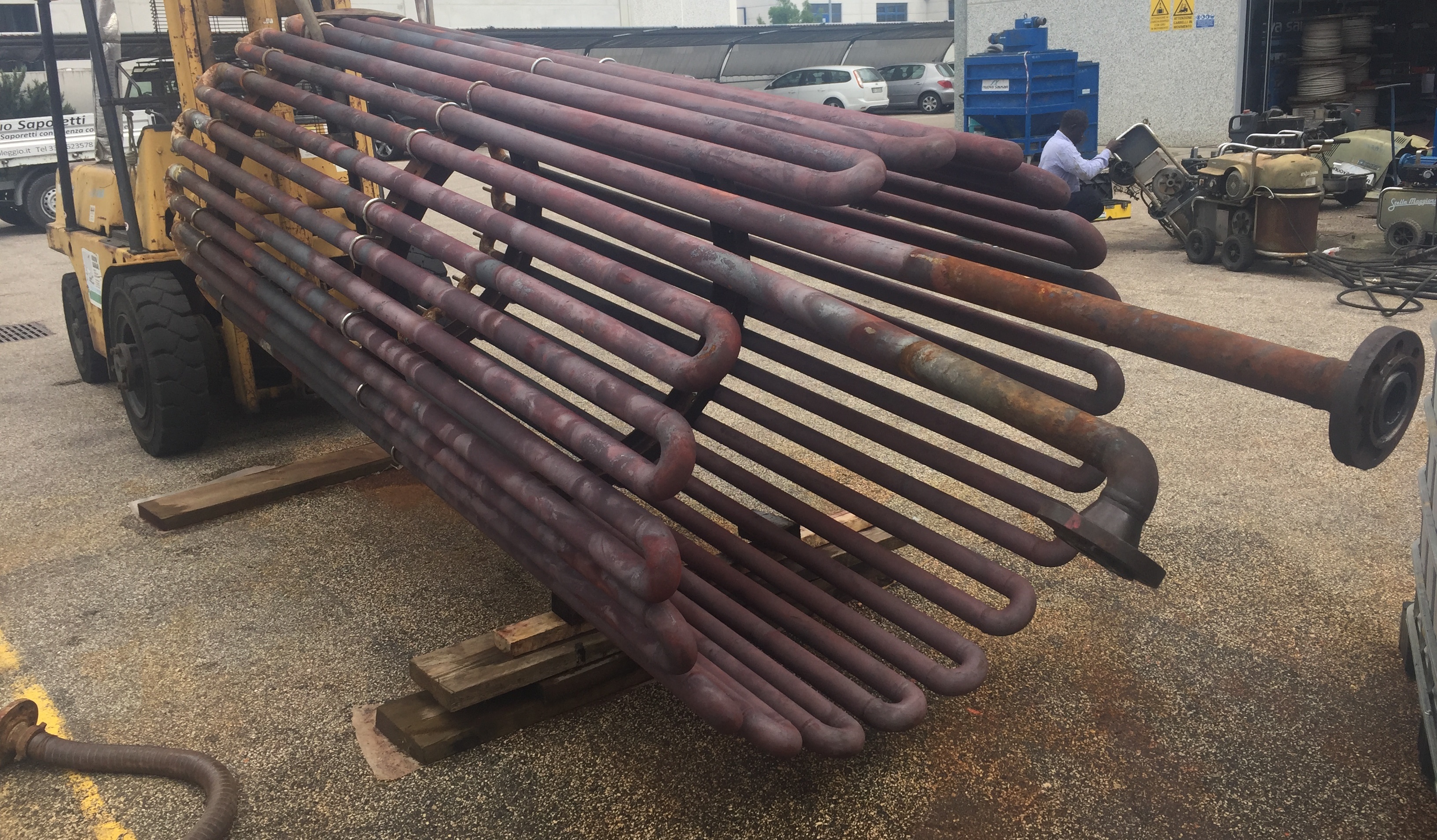CHEMICAL CLEANING AND PICKLING
Chemical removal of scales on metallic surfaces and equipment.
After operation design and chemical and physical analysis of the material to be cleaned, the cleaning medium and the operating conditions are selected then the chemical cleaning of piping and equipment is performed.
The lines, pumps, and drums are suitable to handle the aggressive chemical media selected for our chemical cleaning services. The process is controlled by periodically tested instruments according to our quality procedure.
The Pickling procedures used by Nuova Saimar comply with ASTM standards
HYDRODYNAMIC CLEANING
High-Pressure Water Washing
Thanks to the Company’s wide experience in the field of industrial plants, and to the presence of skilled personnel that has grown within the Company, Nuova Saimar can clean all kinds of internal and external scale or plugging by using the proper nozzles and high pressure heads.
We can perform hydrodynamic cleanings up to 2500 bar cold, or 250 bar hot.
Furthermore, we can perform ecological sand blasting, using sodium bicarbonate.
-
minimum environmental impact as no powder is generated and sodium bicarbonate is not dangerous
-
high safety level for workers because of the absence of powders and sparks
-
high compatibility with delicate surfaces
Focus on heat exchangers
Nuova Saimar is the market leader in dismantling and repairing all kinds of heat exchangers.
Thanks to the Company’s wide experience in the field of industrial plants, and to the presence of skilled personnel that has grown together with the Company, we can offer maintenance turn-key services from dismantling, equipment opening, cleaning, parts replacements of shell, tube, and plate heat exchangers.
The quality of our service is guaranteed by test certificates recording heat exchanger tightening torque final water tests.
Chemical Washing of Heat Exchangers
One option to clean the heat exchangers is to submit the exchange surfaces (e.g. plates, tube bundle, etc.) to flushing cycles with acid or basic solutions, depending on the fouling and the material of the exchanger. The operation requires a certain amount of time and careful control of the pH of the washing solution.
In case of the plate heat exchanger, at the end of the chemical washing cycles, each plate is visually checked and further control is carried out with plant penetrating liquids to highlight any cracks or punctures not visible with the naked eye. A further rinse is then carried out to remove the residues of the penetrating liquids from the surface of the plates.
Mechanical and / or Hydromechanical Cleaning of Heat Exchangers
To clean all the components of the exchanger mechanically or with high-pressure water, it is assumed that the latter is out of service and disassembled in as many parts as possible in order to ensure access even to the most remote points.
In the case of shell and tube exchangers, the latter must be extracted in order to clean the external surface, while in the case of plate heat exchangers, plate after plate cleaning is performed.
In any case, care must be taken not to damage the components and keep in mind that sometimes the removal of encrustations generates new leaks.
Whenever impurities, obstructions, or deposits are removed, the surfaces of the components are returned to bare metal
For the tube bundles of the exchangers, special tools are usually used, suitable for the type of residue to be removed, such as PIG (flexible pads), brushes, and pipe cleaners.
The mechanical action can also be caused by a high-pressure water jet (starting from 200 bar) and in some cases, a mixture of air and water can also be used as the propulsion fluid.
An advantage of using water is the ability to collect the fluid coming out of the pipes in order to then analyze the type of encrustation. For example, you can evaporate all the water used in cleaning and weigh the residue in order to calculate the scale of the exchanger.
Wanting to guarantee our customers the maximum in terms of safety by ensuring extremely short intervention times in addition to the numerous high and very high-pressure motor pumps with pressures up to 1300 bar, we have specific equipment for the robotic washing of tube bundles of exchangers, shells, columns, pipes and containers in general.
The robots, powered by very high-pressure pumps, work autonomously and require the presence of only one operator each.





